When I plan carefully, I can harvest fresh green beans, Phaseolus vulgaris, from the garden in autumn.
I often have these homegrown vegetables for casseroles or three-bean salads I take to football tailgates, and sometimes for the potlucks that a particular group of my friends likes to hold on the weekends near Halloween.
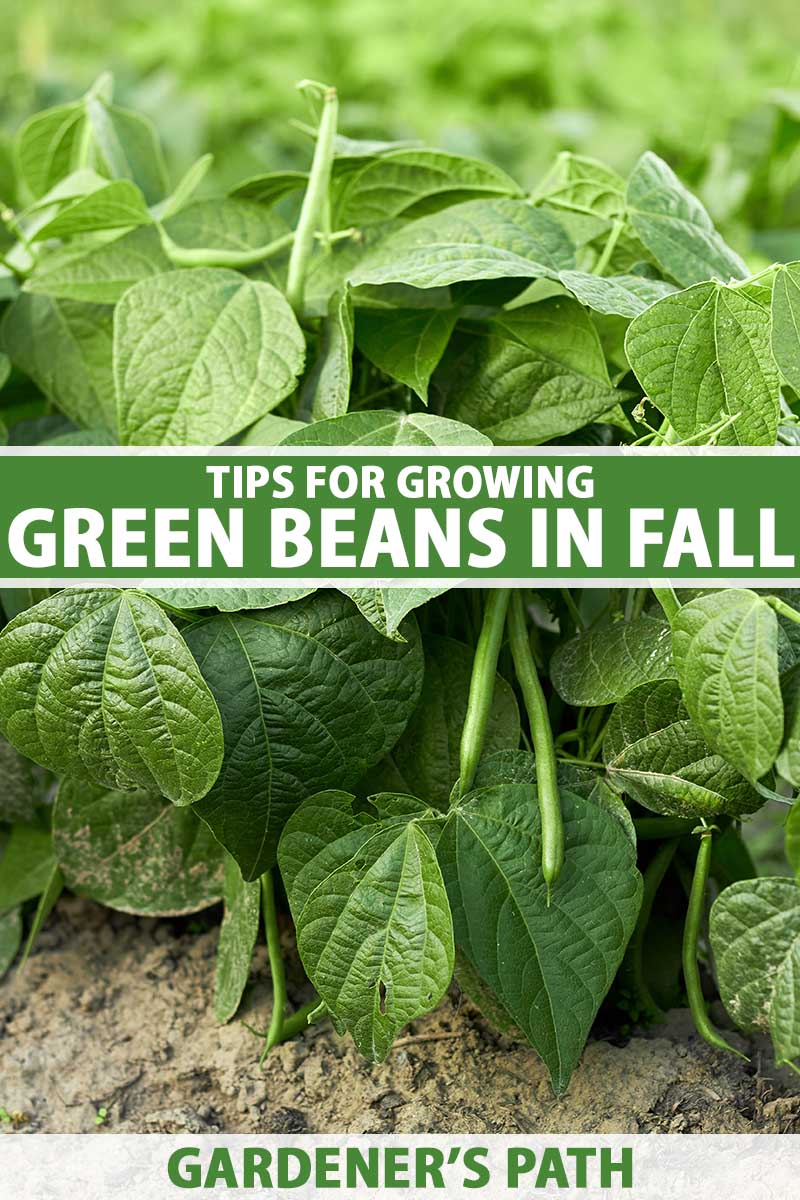
We link to vendors to help you find relevant products. If you buy from one of our links, we may earn a commission.
I live primarily in East Tennessee, though, which is in USDA Hardiness Zone 7b, where the first annual frost isn’t anticipated until October 22. With judicious use of row covers and by planting in full-sun areas, I can usually harvest green beans right up until that time.
If you garden in similar weather, or live in a somewhat cooler growing zone but are willing to take extra measures to protect your plants, you can also grow green beans in the fall.
In this guide, I’ll give tips for planting and caring for a fall crop of these legumes that produce tender, slender pods.
There are a few hacks that will help, but for the most part, even a beginner vegetable gardener can succeed.
Here’s the info I’ll be sharing:
What You’ll Learn
Advantages of Growing Green Beans in the Fall
Growing your own green beans is a low-risk, low-cost way to join the legions of gardeners who extend their summer vegetable harvest into early autumn.
The bush varieties in particular grow quickly, and all types of P. vulgaris are likely to produce a hefty crop – even for beginner gardeners.
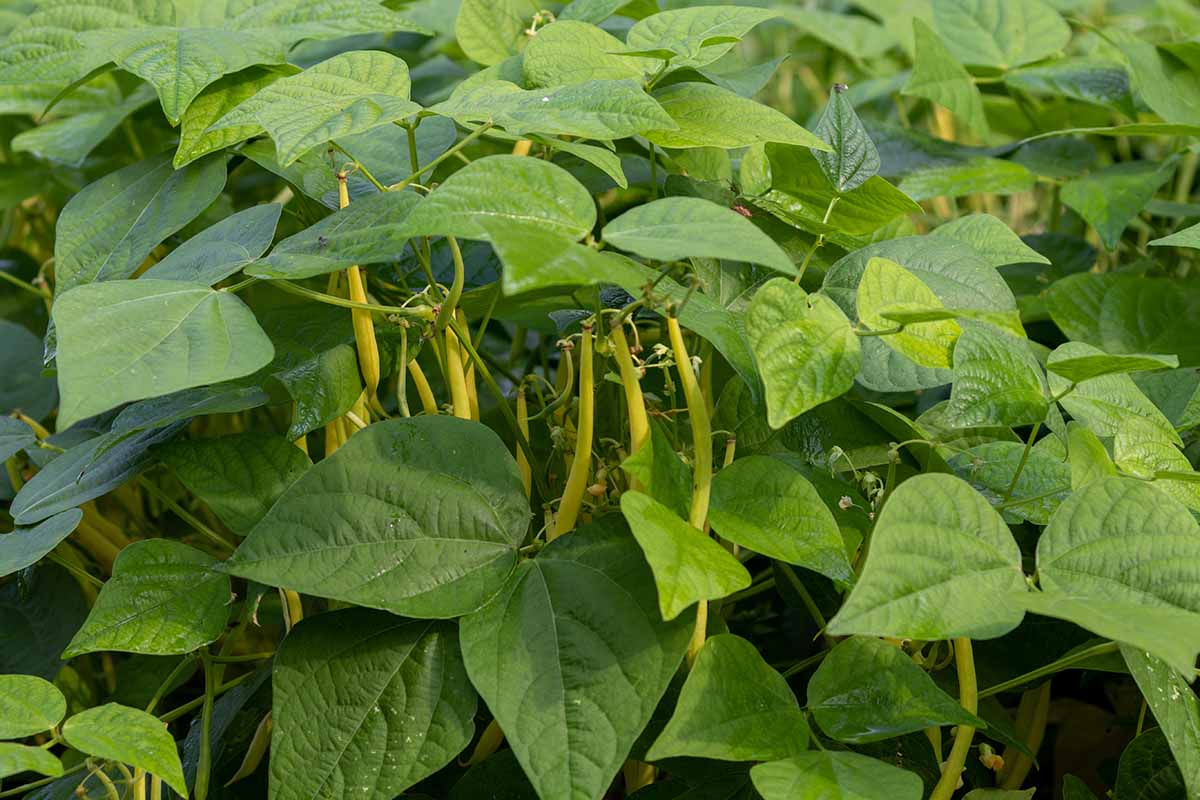
If you’ve already planted these veggies this year, you probably have some seeds left over, and succession planting for an autumn harvest is a great way to use them.
And if you just never got around to planting them in spring – or somehow missed planting any annual vegetables at all this year – you can make up for lost time by sowing in mid- to late summer.
While it’s a little more difficult to keep the soil moist when you grow beans in autumn, that drawback is offset since you’re also able to avoid the weeds that run rampant in summer.
These plants fix nitrogen in the soil, too – legumes are just the crop you want to end with in fall, so you’ll have more nutrients available in that garden patch next spring.
Probably the biggest benefit of growing for an autumn harvest is culinary, though, at least for me.
Whether you’re planting a second round of beans, or only getting around to sowing for the first time late in the season, a fall crop helps you extend the harvest of fresh vegetables into September, or even October or November in some areas.
As the squash and tomatoes start wrapping up, this fall harvest is just getting going. If you’re not ready for summer’s bounty to be gone, this is an easy extender.
Ready to tap into all these benefits? Here are nine tips that will help you succeed with a fall crop of green beans:
9 Tips for the Best Autumn Crop
If you’re growing green beans for an autumn harvest, these tactics will improve your odds of success:
1. Leave Plenty of Time
Any time when you plant a warm weather vegetable as the growing season starts to segue into fall, you must be aware of certain non-negotiable time limits.
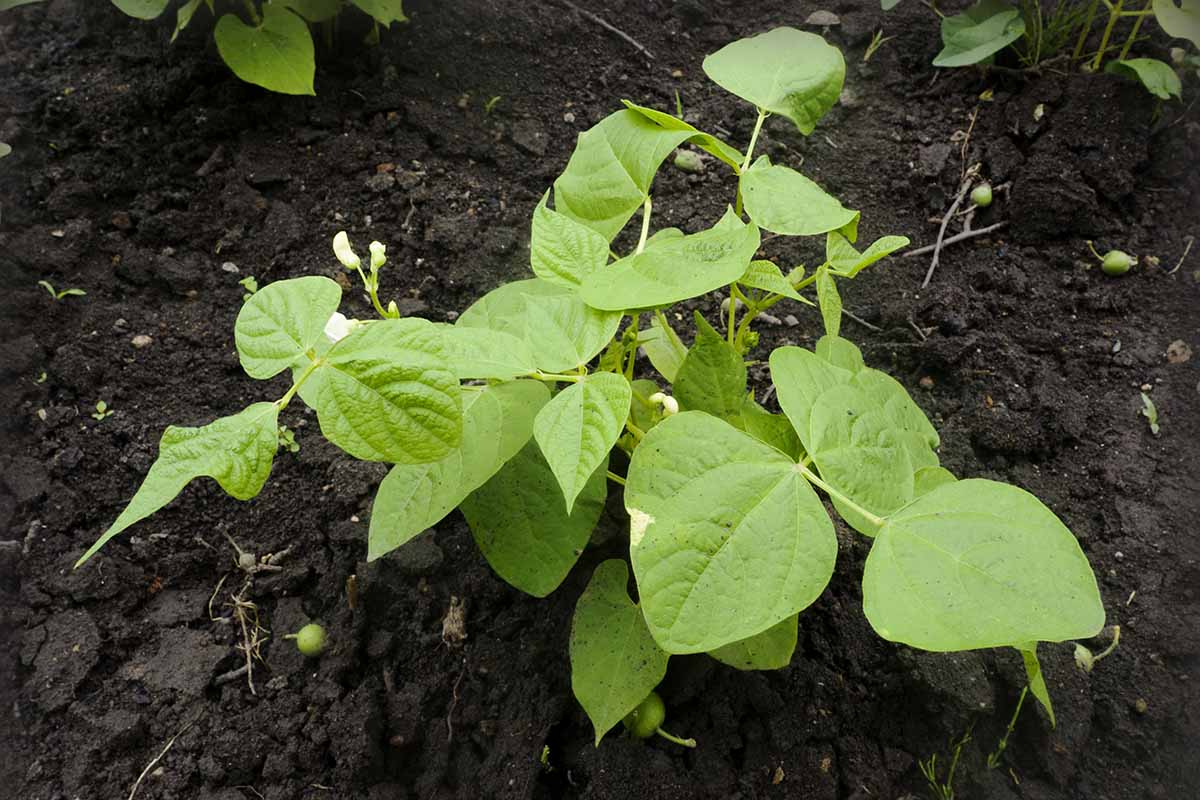
You’re on the clock, here.
P. vulgaris grows best when the air temperature is between 65 and 85°F.
Thankfully, germination isn’t an issue at this time of year, since you’ll be planting when the soil temperature will definitely be higher than the minimum of 55°F that the seeds need to sprout.
But later in the season, the weather can become a big issue. When the first frost hits, the plant dies, and its flowers, leaves, and pods perish with it.
To be able to harvest ahead of the cold, determine the best time to sow by adding about two weeks to the total number of “days to maturity” listed on a bush variety’s seed packet.
This usually works out to planting about 10 weeks ahead of the average first frost in your area.
For pole varieties, you’ll need to add about 30 days to the total listed number of days to maturity.
It’s also a good idea to take steps to encourage the plants to get off to a healthy start.
Soak the seeds for about eight hours before planting to hasten germination, for example, and make sure to give the young plants ample water.
You can find lots of other tips for growing and caring for green beans in our guide.
In summer, you can lose a couple of days in the growing schedule without mishap. But when you’re trying to harvest ahead of the frost, you may need to give the plants some extra TLC.
2. Choose the Best Variety
You’ll need to sow a type of green bean that will have time to germinate, grow to maturity, and produce when temperatures are in that ideal range of 65 to 85°F most of the time.
When you’re planting for an early autumn harvest, you can consider the pole bean varieties that take anywhere from 60 to 90 days to mature if you have a substantial head start.
For a fall crop in my area, for example, I’d have to sow in mid-July to have enough time for a pole type like ‘Kentucky Blue’ to yield a decent-sized crop.
I base that date on the 63 days it takes to mature, plus 30 days for the staggered harvest, and another few days to account for slower maturation in cooler temps.
Unless you live somewhere with a long growing season, I’d stick with bush bean varieties for a fall crop. They produce more quickly and also yield a bumper crop within a short harvest period.
If this strategy yields more beans than you can eat fresh, get tips on canning or freezing an abundant crop from this guide via our sister site, Foodal.
‘Masai’ is one early option for autumn planting, maturing 47 days from sowing in optimal conditions. Its French filet pods are a true green and taste best picked at four inches long.
The leaves are another neat thing about ‘Masai.’ They’re so small they don’t obscure the beans, making them easier to pick. This is especially important for a fall crop since you’ll want to keep up with the harvest as best you can.
Find ‘Masai’ available in 40-seed packets and bulk sacks from True Leaf Market.
The ‘Provider’ cultivar is also worth considering. It resists the powdery mildew that’s so common in late summer and fall.
It will produce a bonanza of stringless, straight, five- to eight-inch pods about 50 days from sowing, on plants that reach just 16 to 18 inches tall.
Find ‘Provider’ available at Botanical Interests in packets of about 120 seeds.
If you do opt for a pole bean, improve your odds of harvesting ahead of the frost with a variety that produces relatively quickly, like ‘Kentucky Wonder’ as I mentioned above.
This cultivar bears copious clusters of dark green, tender beans starting about 60 days from sowing. The rust-resistant plants reach four or five feet tall at maturity.
You can find organic ‘Kentucky Wonder’ seeds at True Leaf Market in packets of about 40 seeds or one-pound sacks.
3. Select a Suitable Site
The first order of business is to select part of the vegetable patch or raised bed that offers full sun. Green beans need up to eight hours of sunlight daily.
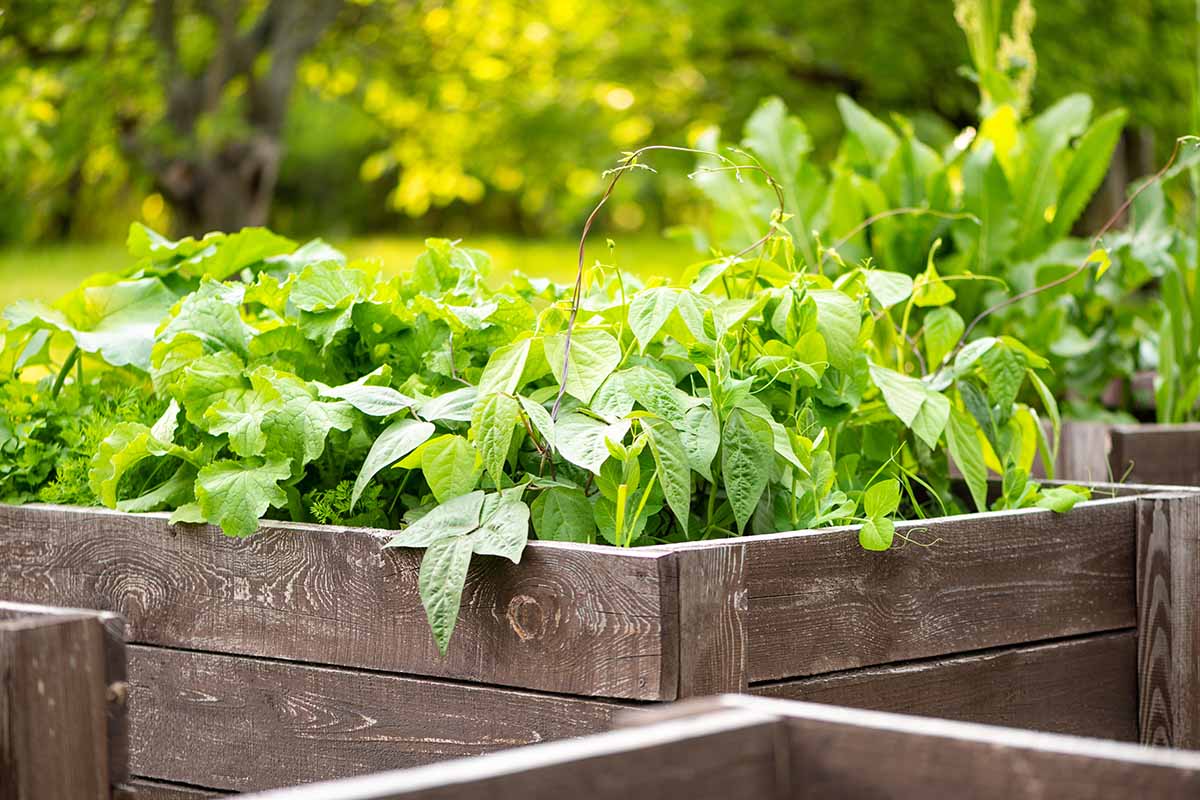
As the days get shorter, the spot you used for spring planting may not offer enough sunlight. If that’s the case, choose a location with more direct sun for an autumn harvest.
Keeping track of the movements of the sun from one season to the next in your gardening journal can come in handy for this.
If there are other plants growing in the same patch, anticipate whether they’ll get so tall they’ll be shading the beans in later parts of the growing cycle.
The soil isn’t as big of a deal. You can usually get by with average soil, as long as it’s well-draining.
And it’s okay to plant these legumes in the same place where you planted a spring crop, as long as you pull all those plants before you sow more seeds.
Otherwise, you’ll have older plants competing with the new ones for water and sunlight long after they’ve started producing.
Finally, if you’re opting for a pole variety, select a space with an established trellis, or somewhere you can insert one before you sow.
Once the plants get going, you won’t want to disturb their shallow roots by adding supports or moving them to an area where they can get more sun – unless they are growing in pots.
4. Be Cautious About Companions
Any number of summer vegetables complement P. vulgaris as companions, including squash and tomatoes. You can learn more about 31 beneficial green bean companions in our guide.
But you don’t want to get into a situation where you sow a new crop of beans with tomatoes or squash that are nearing the end of the season.
When they’re done yielding, it’s necessary to pull up and compost those other vegetable garden favorites, either to add biomass to the compost if they’re healthy, or to prevent any lingering disease or bugs on the mature plants from overwintering in the soil.
If you are trying to grow beans in the midst of all that, it’s tough to weed out the end-of-season plants without disturbing the beans’ shallow roots.
In general, you’ll do better sowing in a fresh patch of soil instead of planting a new crop of beans with established vining or sprawling veggie companions.
That way, they won’t need to share a trellis, sunlight, or water, either, and can grow quickly enough to harvest ahead of freezing weather.
If you’re growing in a small space, it’s a good idea to plant green your crop near cool-weather brassica seedlings.
The bushes will grow more quickly than the kale, cauliflower, or cabbage, so you won’t have to worry about competition, and the two types of vegetables offer mutual benefits.
And when it’s time to pull the bean plants and leave the brassicas behind, you won’t have to worry about the deep-rooted cole crops accidentally getting pulled up with the shallow-rooted beans.
5. Weed Ahead of Sowing
When you plant beans in late spring, they can usually grow more quickly than seasonal weeds, which are just getting started.

But when you’re sowing in mid- to late summer for an autumn harvest, any weeds that are already in the garden have roots that are already established. They’re extra-tough for your seedlings to compete against.
Be sure to carefully weed the area ahead of sowing, pulling up or digging out the entire root system.
Then, diligently keep up with the task in the first 30 days of growing your fall crop, until the plants get so large you might accidentally pull them instead of the weeds.
And place a two- or three-inch layer of mulch around the plants once they’re a few inches tall. This will suppress weeds and retain moisture for the rest of the season.
6. Protect Seedlings from Intense Heat
Beans are renowned for being tough and loving sun. Us Southern gardeners rely on them to keep yielding when other vegetables start languishing in the heat.
But that doesn’t mean they can start life in a scorching-hot garden patch.
If temperatures are exceeding 90°F when you plan to sow, it’s a good idea to shade the soil during the week or so it takes for your seeds to germinate.
Consider using shade cloth, or do like I do and prop a golf or beach umbrella over the soil for the duration.
It’s also more of a challenge to keep the soil moist until germination when temps are soaring.
Make sure to plant in well-draining, pre-moistened soil, and keep the growing medium moist with water from a big old spray bottle or a fine-spray nozzle on the garden hose.
Once the seeds have sprouted, make sure the soil stays consistently moist and they’re not getting scorched for another week or two until they become established.
7. Consider Containers
If you aspire to grow green beans but your growing season doesn’t offer enough days to harvest before frosty weather sets in, you may want to consider growing just a few plants in containers.
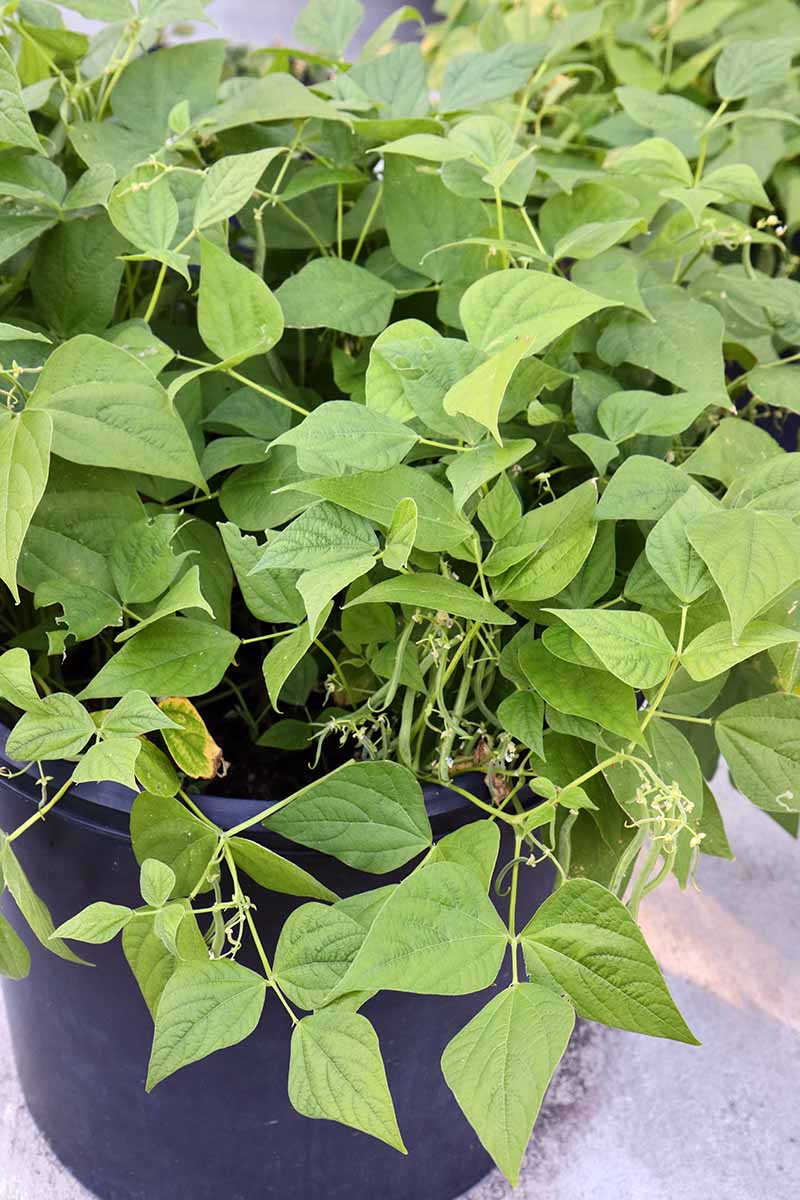
Just make sure to place larger containers on rolling carts so you can easily move them if cold weather threatens and they still need a little more time.
This is just a stopgap measure, though. It won’t help you plant beans out of season, but it may give you an extra week or two if you plant a little past that prime sowing date.
Planting in containers can also help to give you the ability to move plants into the sun, and to provide some added protection against the weather.
8. Harvest Regularly
Once the beans are a few inches long and before you can see the seeds bulging inside, it’s time to pick.
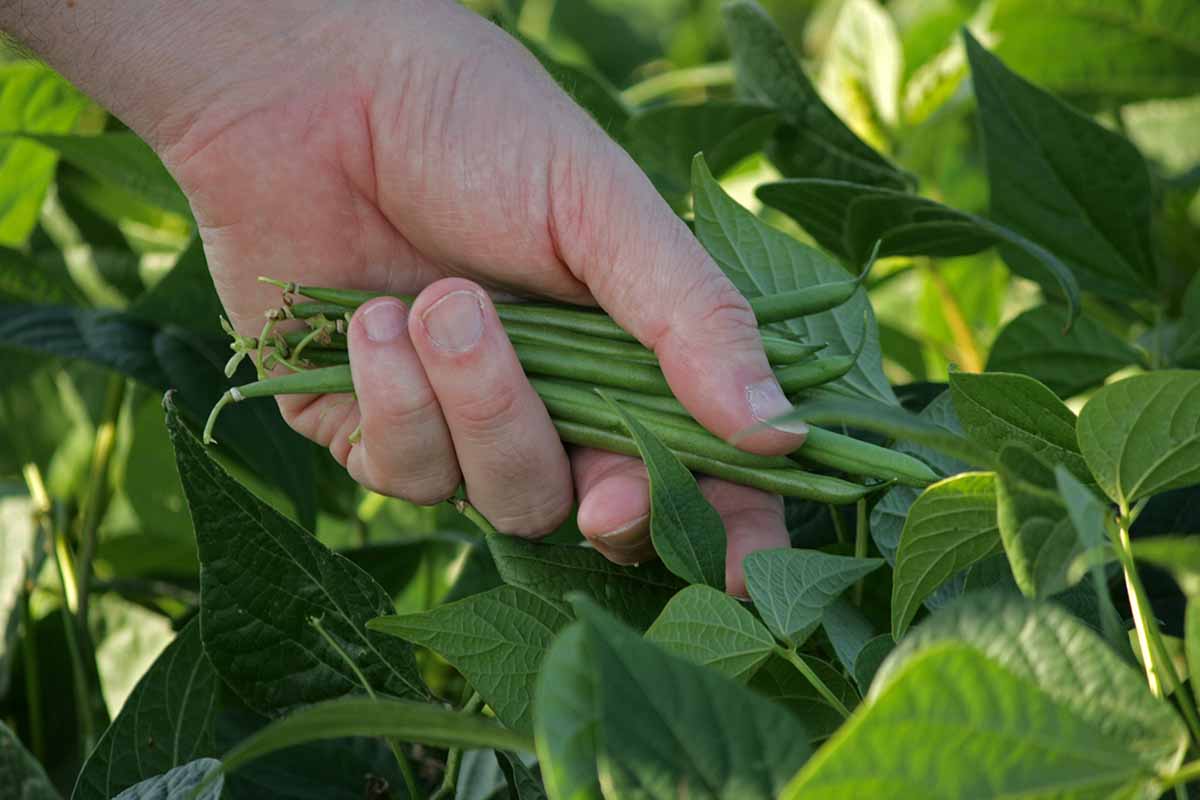
When you’re harvesting in fall, you’ll really want to stay on top of this chore so the plants will keep producing.
This is especially important for the bush varieties with their brief harvest window, but pole types will produce more with frequent picking, too.
In summer, you have the luxury of forgetting about a couple of plants and just planting more if they stop producing. But the harvest in autumn is available only for a short time. If the plants stop yielding new pods, it’s game over.
9. Watch the Weather
When the end of this second planting starts coming to a close, you’ll want to keep an eye on the weather forecast.
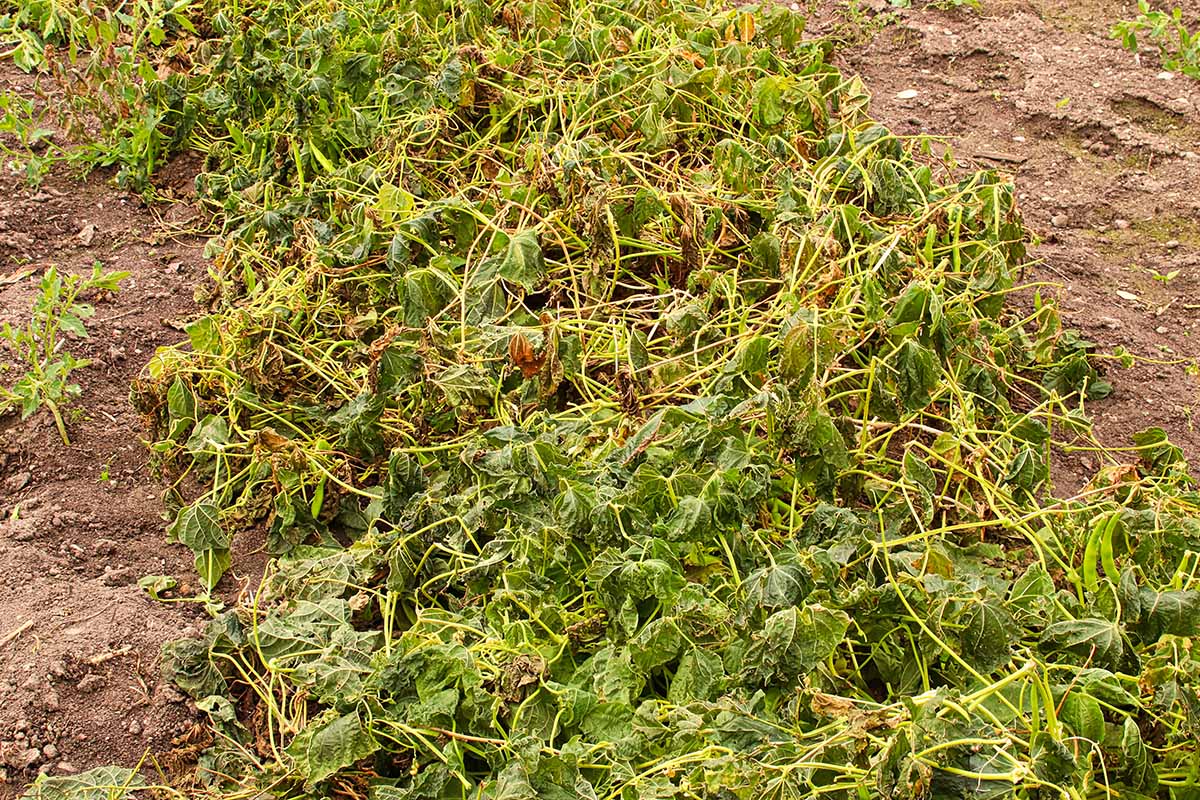
If there are still beans growing on your bushes or vines, it can be worthwhile to cover them ahead of freezing weather.
But only get out the row cover, plastic, or sheets if you anticipate a return to more clement weather and a substantial harvest ahead.
Otherwise, you’re best off uprooting the plants ahead of impending frost. This will give you a nice addition to the compost pile, while discouraging the overwintering insect pests and soilborne diseases that occur in plots filled with leftover garden debris.
A Step Ahead of Jack-o’-Lanterns and Jack Frost
Green beans offer an option for fall growing whether you’re not ready to let go of summer or you just never got around to planting this tasty vegetable in late spring.
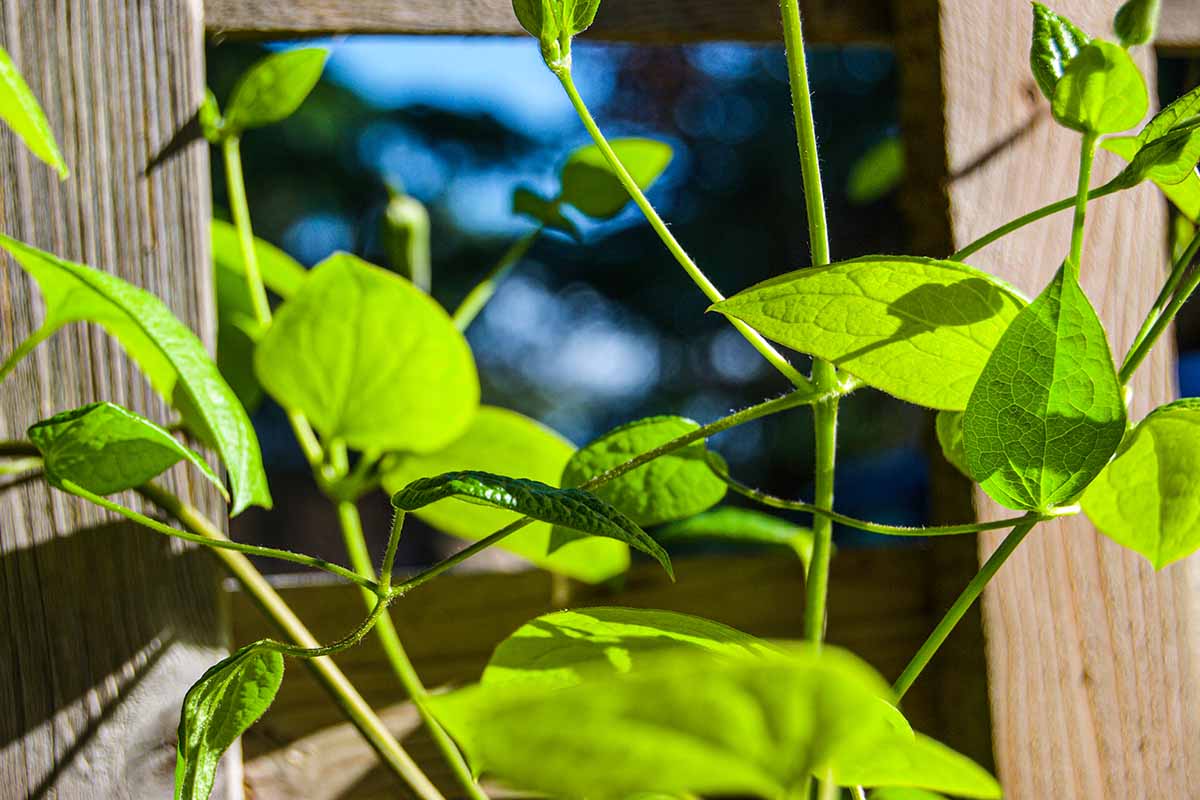
I appreciate that grace period, and I’m sure you will as well.
Have you benefited from sowing green beans for an autumn harvest, or do you still have a question we didn’t cover with these tips? If so, please chime in and leave us a message in the comments section below.
And if you’re interested in discovering more ways to increase yields and enjoy the harvest, read these green bean guides next:
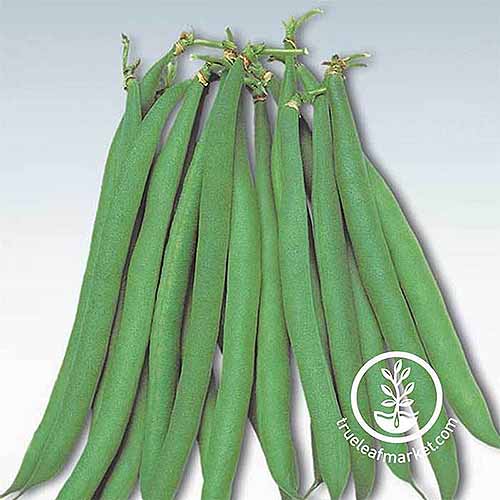
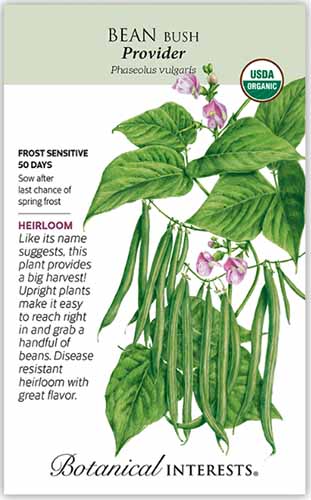
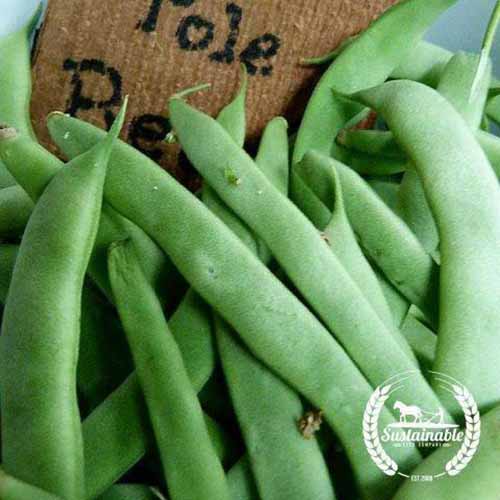

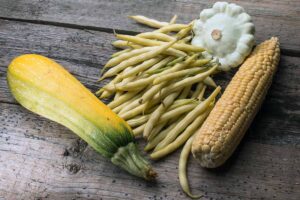
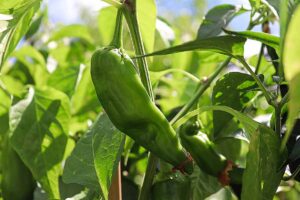
Thank you! This was so helpful.
I have an unexpected empty spot in my late-summer garden, and I think I’m going to try a bush bean, thanks to your excellent advice.
You are so welcome, Corrie, and thanks for the encouraging words.
One of the advantages of writing articles like this is that it reminds me to follow my own advice. I believe I’ll settle on a wax variety to grow myself this autumn since I didn’t get to them this summer.
Good luck!